Culture. Family. Memory. History. Endurance. Massoud Hayoun draws from the threads of his identity, weaving together an unwavering resistance to state control and colonialism.
Wrapping up its tenure at Larkin Durey in London, Stateless is a wonderfully succinct exploration of systemic occupation and control over identity. There’s something about the gallery space that makes the experience of observation feel like a hidden gem. The art almost feels more personal, more intimate. This one certainly felt like a reckoning of home, a return to a familiar feeling. Hayoun places himself across the 8 paintings, seamlessly aligning the temporalities of personal/public, past/present, real/imagined. Stateless celebrates intersectional identity as much as it enacts authentic forms of radical imagination.
Hayoun is renowned for his work as a journalist at Al Jazeera, and is the author of the book, When We Were Arabs: A Jewish Family’s Forgotten History. Displacement and memory tirelessly stand at the forefront of Hayoun’s work, and Stateless explores further what it means to him to be a Jewish, Arab man.
Hayoun’s blue figures sit across various landscapes, transcending past and present. Akin to the blue shades of the ocean that arrive in tides, transform, and surpass us, Hayoun’s blue figures appear as if a transitory spectre. They’re surreal and illuminating, very striking if you look for long enough. Blue was also the colour of the world’s first artificial pigment, likened to the artificial identities imposed on stateless beings.
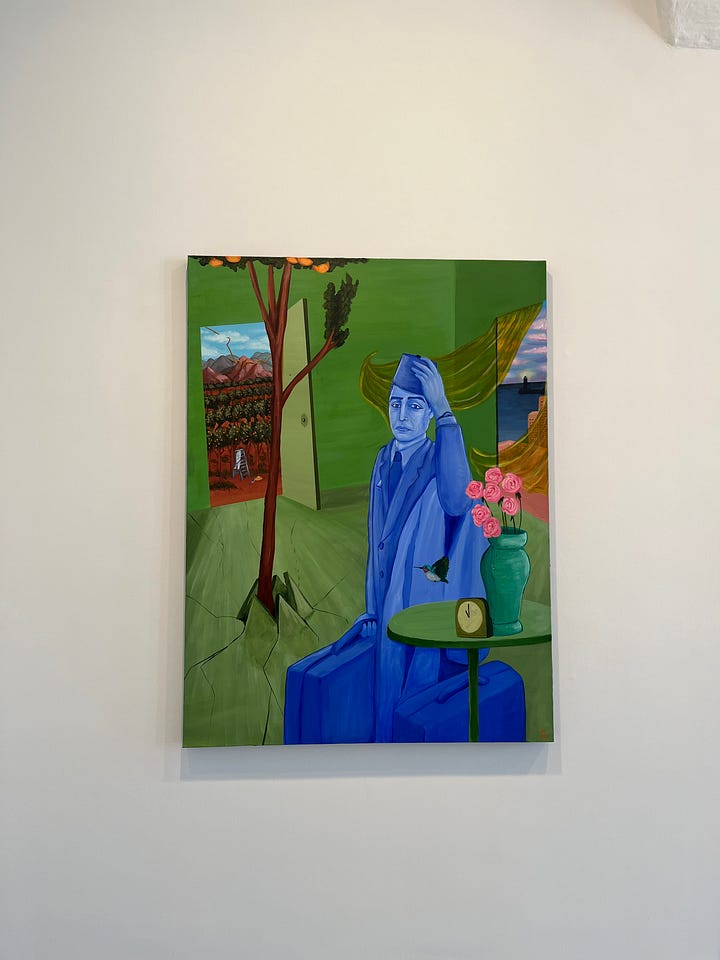


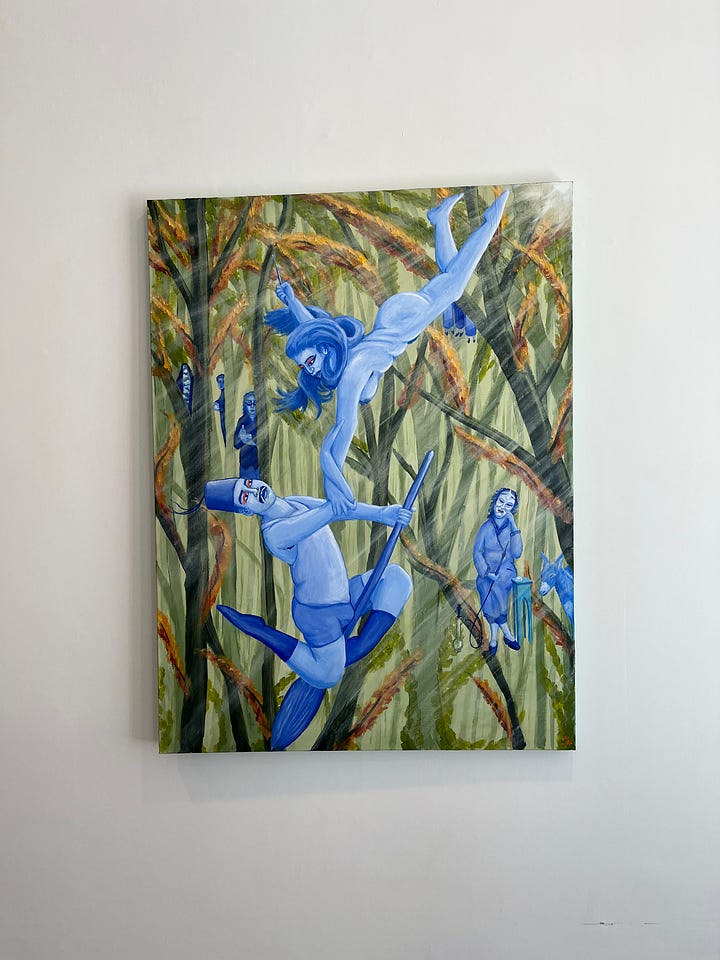
Impossible to miss are nature elements within concrete homes, and images of the keffiyeh spread out like easter eggs in his paintings. As we transfix on Hayoum’s work, it’s hard to ignore the thought that a genocide is unfolding somewhere else in the world.
Alongside his Jewish and Arab roots, Hayoum also nods to time spent in China. In one, he portrays the love between his great-great grandparents. The two figures are wrapped in a fine red string (a Chinese symbol for ‘destined love’), and are decorated with jasmine flowers (a practice in Saudi Arabia’s Jazan and Asir provinces). This melange of cultures and personal memory queers preconceptions of how we see the world, inviting our lens to be fluid.
He also nods to Chinese myth; in one painting, he combines myth and reality. He recalls a memory of touch, rather, his dislike of it. This is something he shares with his great grandmother, who also hated to be touched in the heat of summer. Hayoum himself sits at the bottom right of this painting, with his great-grandmother on either side of him, whispering into his ear. Also pictured are other distinct memories of Chinese culture and myth. This could present the displacement of person, but also the surrealism we find in notions of identity as a whole.
In another, he hangs on to a woman as she carries him through the forest. Several women stand amidst the trees in the background. These represent the women who carried him through his life, past and present. If you look closely at the far left, there is a person with no head or body, but merely light pouring out of a figure. This is a relative who Hayoum had no point of reference for, but is aware of all the same.
Think about the stories we are told as children: how your great grandmother was a fighter in spirit, or your great uncle was a war hero. They change, bend, and warp through time, with no one to record the truth. Generations later, we sift through the fractions of memory and oral history, trying to find a thread to tie us back to our own histories. With any form of displaced ancestry, this becomes so much more pressing - finding that thread is finding a shared piece of identity to what we could have been.
Stateless, to me, reclaims these stories. Hayoun, in these 8 paintings, reclaims his culture in all of its faces. As he shapeshifts across several planes of his identity, he is gloriously fractured: he is his family and his culture. He ingeniously subverts the perceptions assigned to him by the world, those that render him other. Through Stateless, he demands a voice for those fighting to break out of the silence.
We’re living in a world where Palestinians are fighting tirelessly for freedom, while on the other side of the globe, ICE rages a terror war in the U.S. Against this backdrop, Stateless leaves a poignant mark on its observer. To look at the world and see human connection, love, and touch; and for these feelings to travel as memory across Hayoun’s tender landscapes – this is truly a power.
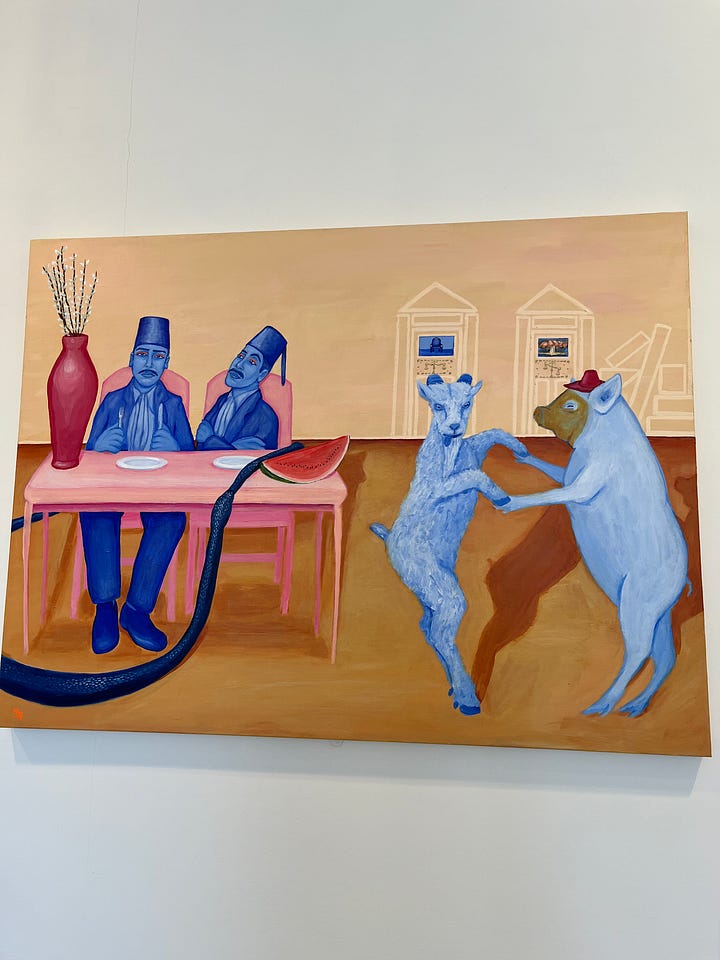
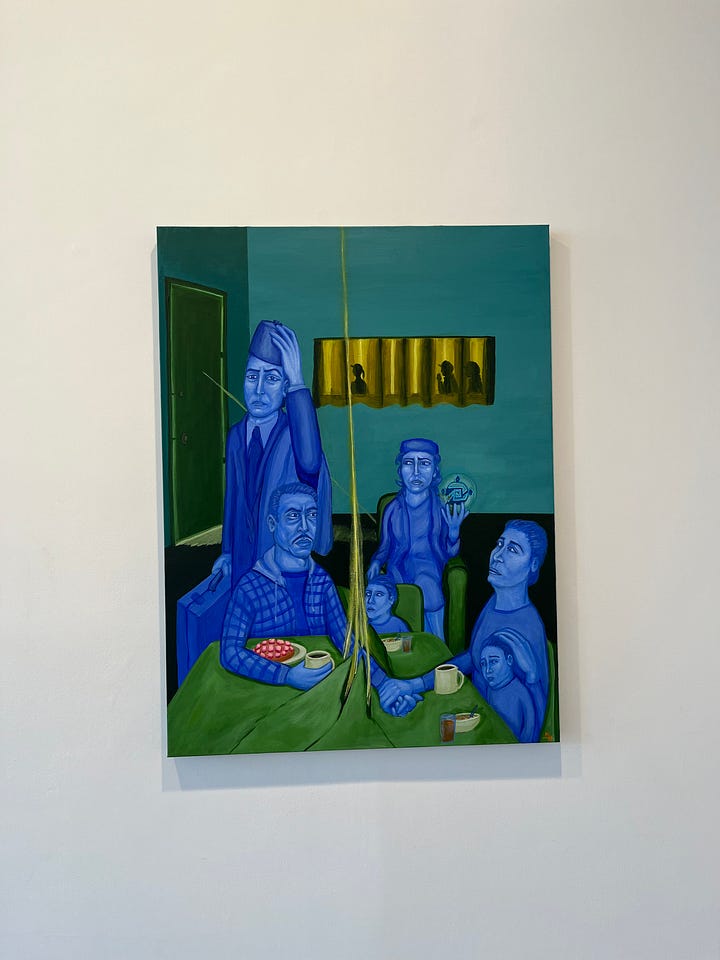

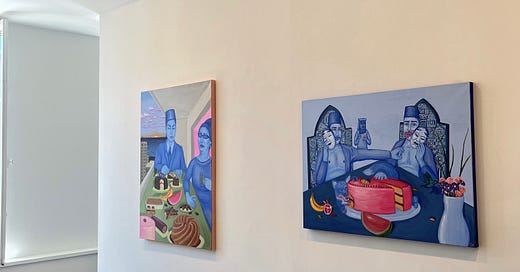



Loved reading this. Thank you for sharing!